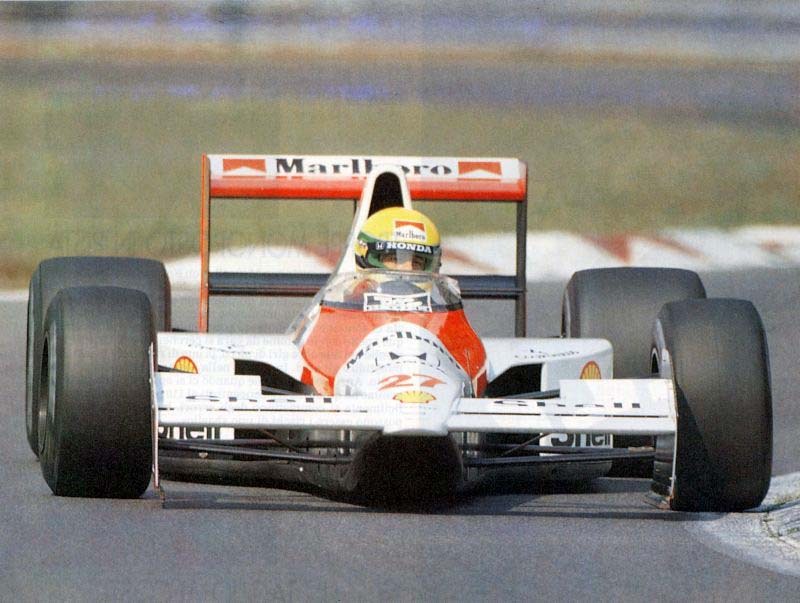timbo wrote:gold333 wrote:But for all the catastrophic eventualities you mention, F1 cars ran a flat bottom from 1968 - 1995 and nothing catastrophic happened because of the flat bottom in those 27 years, apart from awesome sparks and cars that were vicious to drive!
Eh? Flat bottom in 1968? Why not 1936?
Also from 1978 till 1982 it was anything BUT a flat bottom. And prior to Tyrrel 019 the floor not much relied on actually getting more air UNDER the car, so there were less sensitivity all around.
Thanks for your reply! You are right. With flat bottom pre-1982 I meant more "lack of a stepped flat bottom". Prior to 1982 the entire underfloor of the car was a diffuser with the edges closed (skirts) touching the ground, creating a semi-vacuum. The closed sides had ride height measured in millimetres and skirted the ground. When ground effect was banned there was a reason engineers adopted a flat bottom instead of a stepped bottom.
Yes, the Tyrrel 019 notoriously had a high nose, to aid airflow to the sidepods but the bottom was still flat. To quote wiki:
"the generation of low pressures relies on increasing the speed of the air passing underneath the flat bottom of the car, in relation to that passing over and around it. In simple terms, the more air that can be drawn underneath a car, the faster that air will have to be moving, and the faster the air is moving, the lower the pressure."


In 1990 McLaren also tried it:

But for some reason preferred the low nose solution coupled to the flat bottom. High noses (apart from the Benetton team) never really caught on until the stepped bottoms of 1995. I'd really love to know why high noses coupled to flat bottoms never caught on if it was demonstrably more efficient.
timbo wrote:gold333 wrote:We (people who have followed F1 for decades) know the stepped floor was a measure just like the grooved tires or the narrowing of the chassis.... All made to slow the cars down. It has no place in an out and out Formula One World Championship.
We? I am following F1 for "decades" too.
And Craig Scarborough as well. Here's what he had to say:
The stepped underfloor was a reaction to the accidents of 1994, when the floor could be flat and was purposely run as close to the track as possible to gain ground effect, leading to issues with stalling if the gap between road and floor closed up too much.
http://www.autosport.com/news/report.php/id/120521
And I can say that rules which are intended to limit pace were part of the sport from its beginning.
I think with "stalling" Craig is referring to the National Geographic documentary on Senna's crash which purports that Senna crashed due to the rear flat bottom touching the ground due to low ride height due to reduced tyre pressures due to the safety car. I don't share this view and share the view of Adrian Newey (left rear puncture) as Senna's rideheight was good enough to take Tamburello at racing speed on lap 6 (when the pressures would have even been lower).
I can't think of any other crashes between 1982-1994 due to diffuser stall as Craig mentions. I'd (really!) love to hear an example and be corrected though.
I remember a lot of drivers in 1995 saying the new stepped bottom was causing a lot of pitch sensitivity though. Also, Prost notorious for removing his seat and sitting on the tub of the car in the early 80's to get a better feel for the handling, as the bottom was touching the track so often.
I semi-agree that the sport had rules to limit speed since the beginning but the Weickershof protocol adopted (mainly post Senna's crash) had profound "castrating" effects on the cars. the effects of which are only starting to wear off 20-25 years later:
-1.8m narrow cars (from 2.2m)
-grooved tires (from slicks)
-15inch narrow tires (from 18inch)
-lowered wings
-stepped bottom (from flat)
And all those changes in just 3 years (1995-1998).
I've always wanted to take a peek into that parallel universe where Senna had not died. Just to see the cars we would have today, had the Weickershof not been implemented. I think 2017 and beyond may begin to offer a glimpse.
F1 car width now 2.0m (same as 1993-1997). Lets go crazy and bring the 2.2m cars back (<1992).







